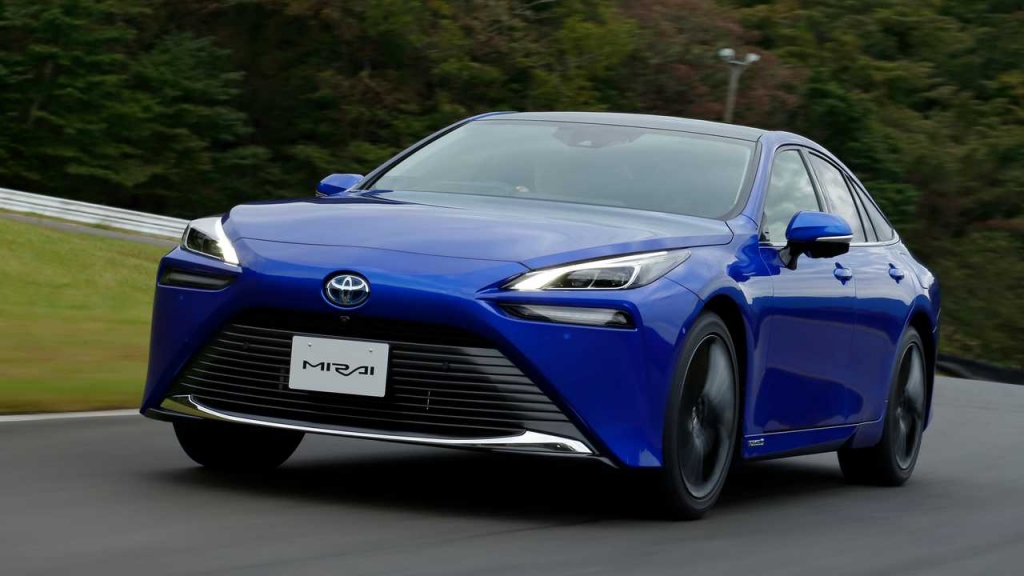The Toyota Group is ramping efforts in developing hydrogen fuel-cell vehicles and its parts to meet the global demand for eco-friendly cars.
Last month, Toyota Motor Corp. released its second-generation hydrogen-powered Mirai sedan, which is equipped with three tanks to hold hydrogen fuel, giving it a range of up to 850 kilometers, roughly 30 percent more than the first-generation's.
The new Mirai’s longer-range was primarily due to a third tank developed by Toyoda Gosei Co., which manufactures rubber and resin parts for vehicles.
To allow the third tank to efficiently contain hydrogen fuel, Toyoda Gosei covered it with a unique resin material that can resist high pressures of about 70 megapascals.
Toyota Gosei invested ¥12 billion to build a new plant in Inabe, Mie Prefecture to mass-produce the tank.
According to Toyoda Gosei President Toru Koyama, the company is aiming to have its products used in other cars, such as commercial vehicles.
Meanwhile, Aichi Steel Corp., a Toyota affiliate that makes steel products for auto parts, has developed special stainless steel that can withstand high-pressure hydrogen as a material for Mirai components without using costly rare metals.
Toyota Industries Corp., which creates auto parts and assembles Toyota’s RAV4 sport-utility vehicles, came up with a new air compressor to effectively deliver air including oxygen to the Mirai's generator.
Denso Corp., another Toyota group company, manufactures high-quality silicon carbide power semiconductors for the Mirai.



 Domino's Launches Innovative 'You Tip, We Tip' Promotion
Domino's Launches Innovative 'You Tip, We Tip' Promotion  The idea that US interest rates will stay higher for longer is probably wrong
The idea that US interest rates will stay higher for longer is probably wrong  Digital trade protocol for Africa: why it matters, what’s in it and what’s still missing
Digital trade protocol for Africa: why it matters, what’s in it and what’s still missing  Aramco Becomes FIFA’s 6th Global Partner Joining Adidas, Coca-Cola, Qatar Airways, Hyundai, and Visa
Aramco Becomes FIFA’s 6th Global Partner Joining Adidas, Coca-Cola, Qatar Airways, Hyundai, and Visa  EU enlargement: What does the future hold?
EU enlargement: What does the future hold?  Nigerians throw naira notes around to show love: but it could land you in jail
Nigerians throw naira notes around to show love: but it could land you in jail  Inditex Re-enters Venezuelan Market with Zara Store Opening
Inditex Re-enters Venezuelan Market with Zara Store Opening  How India’s economy has fared under ten years of Narendra Modi
How India’s economy has fared under ten years of Narendra Modi  Japan Posts 7.7% Growth in Machinery Orders
Japan Posts 7.7% Growth in Machinery Orders  Hybe Accuses ADOR Subsidiary’s CEO of Breach of Trust
Hybe Accuses ADOR Subsidiary’s CEO of Breach of Trust  New EU trade rules could put poor countries in a billion dollar ‘green squeeze’
New EU trade rules could put poor countries in a billion dollar ‘green squeeze’  Food prices will climb everywhere as temperatures rise due to climate change – new research
Food prices will climb everywhere as temperatures rise due to climate change – new research  The yen plunges to 34-year low despite interest rate hike
The yen plunges to 34-year low despite interest rate hike 































